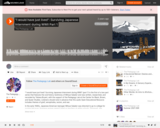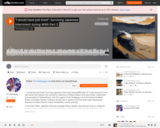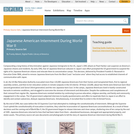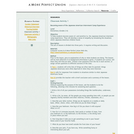
Photo of a store front the day after the attack of Pearl Harbor and Circle of Viewpoints activity as an introduction to Japanese Internment.
- Subject:
- History
- Material Type:
- Activity/Lab
- Date Added:
- 05/23/2017

Photo of a store front the day after the attack of Pearl Harbor and Circle of Viewpoints activity as an introduction to Japanese Internment.

“‘I would have just lived’: Surviving Japanese internment during WWII” (Part 1) is the first of a two part series that features the oral history testimony of Mitsue Salador and was written, researched, and recorded by Tatiana Bryant, with the support of the Pedagogy Lab at the Center for Black, Brown, and Queer Studies. Listeners should note in advance that this audio Open Educational Resource includes themes of grief, xenophobia, racism, and war.
In the early 1940s, Japanese American teenager Mitsue Salador was directed to go to college for nursing because Japanese women weren’t hired as teachers at white schools. Dismayed, she entered college in Portland, OR to study nursing briefly, before she was forced into an urban detention center for people of Japanese heritage after Pearl Harbor. Mitsue organized a loophole escape from the detention center by applying to a college in the Midwest where she would be deemed as less of a potential threat away from active war theaters. Isolated from her family, she continued her education while her parents and youngest sibling survived an internment camp and older siblings navigated college and active military service. In Part 1, Mitsue Salador of Long Island, NY via Hood River, OR, talks about her lived experience as a college student and daughter of Japanese immigrants before the attack on Pearl Harbor.

“‘I would have just lived’: Surviving Japanese internment during WWII (Part 2)” is the second of a two part series that features the oral history testimony of Mitsue Salador and was written, researched, and recorded by Tatiana Bryant, with the support of the Pedagogy Lab at the Center for Black, Brown, and Queer Studies. Listeners should note in advance that this audio Open Educational Resource includes themes of grief, xenophobia, racism, and war.
In the early 1940s, Japanese American teenager Mitsue Salador was directed to go to college for nursing because Japanese women weren’t hired as teachers at white schools. Dismayed, she entered college in Portland, OR to study nursing briefly, before she was forced into an urban detention center for people of Japanese heritage after Pearl Harbor. Mitsue organized a loophole escape from the detention center by applying to a college in the Midwest where she would be deemed as less of a potential threat away from active war theaters. Isolated from her family, she continued her education while her parents and youngest sibling survived an internment camp and older siblings navigated college and active military service.
In Part 2, Mitsue Salador of Long Island, NY via Hood River, OR, talks about her lived experience as a college student and daughter of Japanese immigrants forced to relocate to a detention center after the attack on Pearl Harbor.

This collection uses primary sources to explore Japanese American internment during World War II. Digital Public Library of America Primary Source Sets are designed to help students develop their critical thinking skills and draw diverse material from libraries, archives, and museums across the United States. Each set includes an overview, ten to fifteen primary sources, links to related resources, and a teaching guide. These sets were created and reviewed by the teachers on the DPLA's Education Advisory Committee.

This activity “Becoming aware of the Japanese American Internment Camp Experience” is intended to help students become aware of, and sensitive to, the Japanese American interment camp experience. They will develop a sense of empathy by simulating the situations which Japanese American children faced.